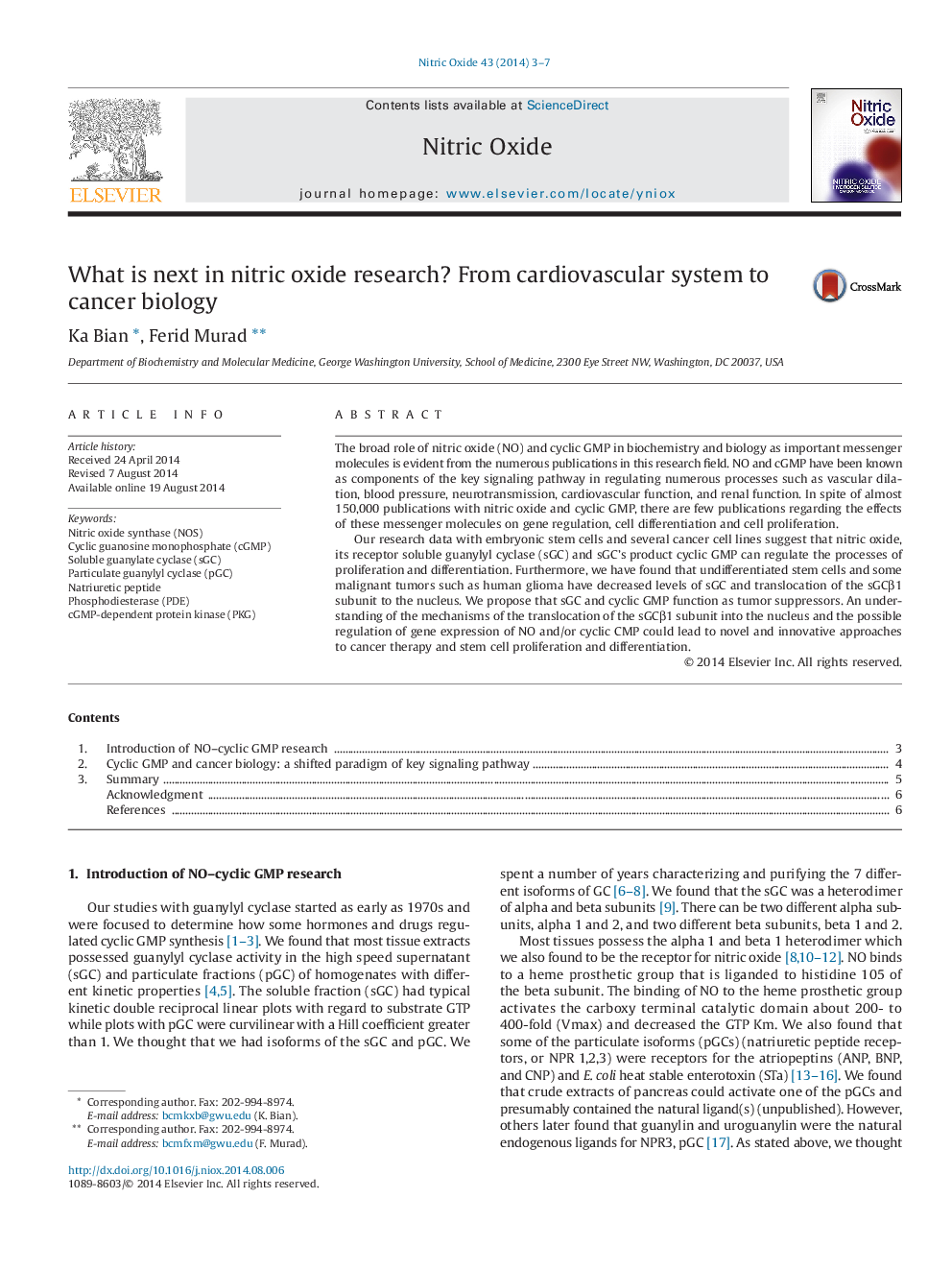| کد مقاله | کد نشریه | سال انتشار | مقاله انگلیسی | نسخه تمام متن |
|---|---|---|---|---|
| 2000501 | 1541616 | 2014 | 5 صفحه PDF | دانلود رایگان |
• NO and cGMP have been known as components of the key signaling pathway in regulating numerous processes such as vascular dilation, blood pressure, neurotransmission, cardiovascular function, and renal function.
• Our research data with embryonic stem cells and several cancer cell lines suggest that nitric oxide, its receptor soluble guanylyl cyclase (sGC) and sGC's product cyclic GMP can regulate the processes of proliferation and differentiation.
• Furthermore, we have found that undifferentiated stem cells and some malignant tumors such as human glioma have decreased levels of sGC and translocation of the sGCβ1 subunit to the nucleus.
• We propose that sGC and cyclic GMP function as tumor suppressors.
• An understanding of the mechanisms of the translocation of the sGCβ1 subunit into the nucleus and the possible regulation of gene expression of NO and/or cyclic CMP could lead to novel and innovative approaches to cancer therapy and stem cell proliferation and differentiation.
The broad role of nitric oxide (NO) and cyclic GMP in biochemistry and biology as important messenger molecules is evident from the numerous publications in this research field. NO and cGMP have been known as components of the key signaling pathway in regulating numerous processes such as vascular dilation, blood pressure, neurotransmission, cardiovascular function, and renal function. In spite of almost 150,000 publications with nitric oxide and cyclic GMP, there are few publications regarding the effects of these messenger molecules on gene regulation, cell differentiation and cell proliferation.Our research data with embryonic stem cells and several cancer cell lines suggest that nitric oxide, its receptor soluble guanylyl cyclase (sGC) and sGC's product cyclic GMP can regulate the processes of proliferation and differentiation. Furthermore, we have found that undifferentiated stem cells and some malignant tumors such as human glioma have decreased levels of sGC and translocation of the sGCβ1 subunit to the nucleus. We propose that sGC and cyclic GMP function as tumor suppressors. An understanding of the mechanisms of the translocation of the sGCβ1 subunit into the nucleus and the possible regulation of gene expression of NO and/or cyclic CMP could lead to novel and innovative approaches to cancer therapy and stem cell proliferation and differentiation.
Journal: Nitric Oxide - Volume 43, 1 December 2014, Pages 3–7
